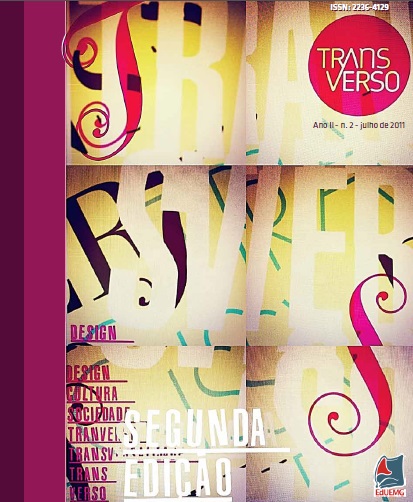Universal Design and Inclusive Design
transformations for a new application
Keywords:
inclusive design, universal design, product design, userAbstract
In recent decades we note the emergence and development of design projects approaches called inclusive, especially on the product ́s development. These approaches and concepts comes from the perception of some authors like Mace (1985), Keates (1999) and Clarkson (2004), that the project design as it has been conceived, in its most conventional approaches, resulting in design exclusion, that implies in loss of users that presents physical, sensorial and motor impairments. This article aims to present such approaches, in order to understand them and compare their theoretical and conceptual aspects, as well as the necessary guidelines for the implementation of that design models.
References
ALVARENGA, F. B. Uma abordagem metodológica para o projeto de produtos inclusivos. 2006. 218 f.Tese (Doutorado em Engenharia Mecânica) - Faculdade de Engenharia Mecânica, Universidade Estadual de Campinas, Capinas, 2006.
ASLAKSEN, F. et al. Universal design: planning and design for all (1997). GLADNET Collection. Paper 327. The Norwe- gian State Council on Disability, Oslo, 1997 . Disponível em: <http://digitalcommons.ilr.cornell.edu/gladnet collect/327>. Acesso em: 11 nov. 2010.
BAXTER, M. Projeto de produto. São Paulo: Edgard Blücher, 2000.
BOWIE, J. Beyond the universal user: how to design for the universe of users. In: Society for Technical Communication
Conference, 2003, Dallas. Proceedings... Dallas: STC, 2003. p. 268-272.
BRITISH STANDARDS INSTITUTE. BS 7000-6. Design management systems. Managing inclusive design guide. London, 2005.
CEBE - Special Interest Group in Inclusive Design. An introduction to inclusive design. Disponível em: <http://cebe.cf.ac. uk/learning/sig/inclusive/whatisinc.pdf>. Acesso em: 10 nov. 2010.
DESIGN COUNCIL. Inclusive design education resource. Londres: The Helen Hamlyn Research Centre, 2010. Disponível em: <http://www.designcouncil.info/inclusivedesignresource/>. Acesso em: 08 nov. 2010.
______. Case study: OXO Good Grips. Londres, 2006. Disponível em: <http://www.designcouncil.org.uk/Case-studies/ Oxo-Good-Grips/>. Acesso em: 27 out 2010.
KEATES, S.et al. Towards a practical inclusive design approach. Londres, 2001. Disponível em: <http://stuff.mit.edu/afs/ athena/course/16/16.459/OldFiles/Keates.pdf >. Acesso em: 5 nov. 2010.
KEATES, S.; CLARKSON, J. Countering design exclusion: an introduction to inclusive design. London: Springer, 2003.
LEE, Y.; CASSIM, J. How the inclusive design process enables social inclusion. Disponível em: <http://www.iasdr2009.org/ ap/Papers/Special%20Session/Design%20for%20Social%20Inclusion%20and%20Social%20Sustainability/How%20 the%20Inclusive%20Design%20Process%20Enables%20Social%20Inclusion.pdf>. Acesso em: 10 nov. 2010.
LOSSACK, R. The axiomatic approach in the universal design theory. Cambridge, 2000. Disponível em: . Acesso em: 24 out. 2010.
NORMAN, D. A. O design do dia a dia. Rio de Janeiro: Rocco, 2006.
MACE, R. L. et al. The universal design file: designing for people of all ages and abilities. Raleigh: NC State University, 1998. MINISTÉRIO DO MEIO AMBIENTE. Universal design: clarification of the concept. Noruega: Departamento do meio ambiente, 2007.
ONG NOISINHO DA SILVA. Carteira escolar inclusiva. In: Arquivos Brasileiros de Paralisia Cerebral. 2007, n. 2, v. 6. Disponível em: <http://include09.kinetixevents.co.uk/rca/rca2009/paper_final/F94_1558.DOC>. Acesso em: 21 nov. 2010.
STEINFELD, E; TAUKEN, B. Universal designing. In: CHRISTOPHERSEN, J. (Org.). Universal design. 17 ways of thinking and teaching. Oslo: Husbanken, 2002. p 165-190.
THE CAMBRIDGE ENGINEERING DESIGN CENTRE. Inclusive design tool kit. 2004. Disponível em: <http://www.inclusive- designtoolkit.com/betterdesign /whatis/whatis4 .html>. Acesso em: 03 nov. 2010.
Downloads
Published
How to Cite
Issue
Section
License
Copyright (c) 2021 TRANSVERSO

This work is licensed under a Creative Commons Attribution 4.0 International License.
Proposta de Aviso de Direito Autoral Creative Commons
O tipo de licença utilizado nessa revista é CC BY; Essa licença permite que outras pessoas distribuam, remixem, adaptem e desenvolvam seu trabalho, mesmo comercialmente, desde que sejam creditadas pela criação original. Essa é a licença mais flexível oferecida. Recomendado para máxima disseminação e uso de materiais licenciados.
The type of license used in this magazine is CC BY; This license allows others to distribute, remix, adapt and develop their work, even commercially, as long as they are credited for the original creation. This is the most flexible license offered. Recommended for maximum dissemination and use of licensed materials.
1. Proposta de Política para Periódicos de Acesso Livre
Autores que publicam nesta revista concordam com os seguintes termos:
a. Autores mantém os direitos autorais e concedem à revista o direito de primeira publicação, com o trabalho simultaneamente licenciado sob a Licença Creative Commons Attribution que permite o compartilhamento do trabalho com reconhecimento da autoria e publicação inicial nesta revista.
b. Autores têm autorização para assumir contratos adicionais separadamente, para distribuição não-exclusiva da versão do trabalho publicada nesta revista (ex.: publicar em repositório institucional ou como capítulo de livro), com reconhecimento de autoria e publicação inicial nesta revista.
c. Autores têm permissão e são estimulados a publicar e distribuir seu trabalho online (ex.: em repositórios institucionais ou na sua página pessoal) a qualquer ponto antes ou durante o processo editorial, já que isso pode gerar alterações produtivas, bem como aumentar o impacto e a citação do trabalho publicado (Veja O Efeito do Acesso Livre).
Proposta de Política para Periódicos que oferecem Acesso Livre Adiado
Autores que publicam nesta revista concordam com os seguintes termos:
a. Autores mantém os direitos autorais e concedem à revista o direito de primeira publicação, com o trabalho licenciado simultaneamente sob uma Licença Creative Commons Attribution [ESPECIFICAR TEMPO AQUI] após a publicação, permitindo o compartilhamento do trabalho com reconhecimento da autoria do trabalho e publicação inicial nesta revista.
b. Autores têm autorização para assumir contratos adicionais separadamente, para distribuição não-exclusiva da versão do trabalho publicada nesta revista (ex.: publicar em repositório institucional ou como capítulo de livro), com reconhecimento de autoria e publicação inicial nesta revista.
c. Autores têm permissão e são estimulados a publicar e distribuir seu trabalho online (ex.: em repositórios institucionais ou na sua página pessoal) a qualquer ponto antes ou durante o processo editorial, já que isso pode gerar alterações produtivas, bem como aumentar o impacto e a citação do trabalho publicado (Veja O Efeito do Acesso Livre).







